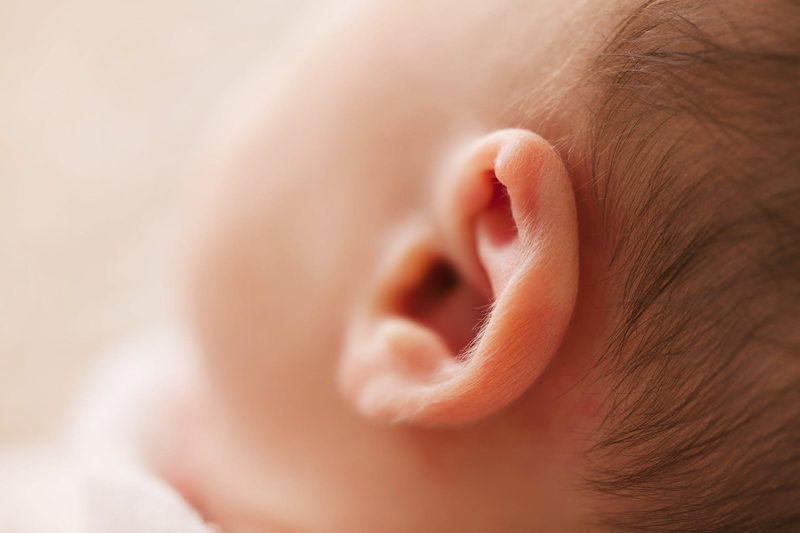Otosclerosis

A common cause of deafness is Otosclerosis, but what is it? This disease is a condition of the middle ear and mainly affects the little bones (the smallest bones in our body) in the middle ear. These little bones are sometimes called the hammer, anvil and stirrup because of their shapes and the one most affected is usually the stirrup or the stapes (to give it is correct name).
When sound occurs what we pick up is the vibration the sound makes. Our ear (outer ear) doesn’t do the hearing, but it channels the vibration to the ear drum. When the ear drum vibrates the little bones in the middle ear move and send the vibrations into the cochlea (inner ear). In the cochlea the fluid activates hair cells which change the vibrations to an electrical signal. This signal travels down the hearing nerve into our brain where we interpret it as sound. The different strengths of vibrations stimulate different parts of the cochlea and so we hear the wonderful variety of sounds our world has to offer.
Otosclerosis is a calcification of the middle ear bones – most often the last bone (or stapes). Basically this means the little bone becomes anchored by additional bone growth. This makes it more difficult for it to vibrate and in the worse cases it stops vibrating totally. For someone with this condition none or only part of the sound vibration will reach the cochlea, because the connection is missing, and they therefore experience a hearing loss. Most often Otosclerosis is in the middle ear but in severe cases it can cause sensorineural deafness in the cochlea as well.
Interestingly, Otosclerosis is experienced by women twice as often as men and has been associated with ‘pregnancy deafness’ where women with this condition experience an acceleration of hearing loss whenever they are pregnant. Science hasn’t yet found a cause for this condition but it is thought to be hereditary or genetic. There does seem to be some (unresearched) indication that taking the Pill or Hormone Replacement Therapy may make this condition worse. A link between Measles and Otosclerosis has also been suggested but no research backs this up.
Usually the only symptom is a slow encroaching deafness with around 75% of people experiencing tinnitus. In addition some people experience balance problems. A stapedectomy (surgery) may return at least some hearing. It’s an operation which replaces the damaged stapes with a plastic or metal ‘bone’. However, it is not always successful. If you are experiencing a slow hearing loss you should get it checked. There may be some intervention which could stop it getting worse.
When sound occurs what we pick up is the vibration the sound makes. Our ear (outer ear) doesn’t do the hearing, but it channels the vibration to the ear drum. When the ear drum vibrates the little bones in the middle ear move and send the vibrations into the cochlea (inner ear). In the cochlea the fluid activates hair cells which change the vibrations to an electrical signal. This signal travels down the hearing nerve into our brain where we interpret it as sound. The different strengths of vibrations stimulate different parts of the cochlea and so we hear the wonderful variety of sounds our world has to offer.
Otosclerosis is a calcification of the middle ear bones – most often the last bone (or stapes). Basically this means the little bone becomes anchored by additional bone growth. This makes it more difficult for it to vibrate and in the worse cases it stops vibrating totally. For someone with this condition none or only part of the sound vibration will reach the cochlea, because the connection is missing, and they therefore experience a hearing loss. Most often Otosclerosis is in the middle ear but in severe cases it can cause sensorineural deafness in the cochlea as well.
Interestingly, Otosclerosis is experienced by women twice as often as men and has been associated with ‘pregnancy deafness’ where women with this condition experience an acceleration of hearing loss whenever they are pregnant. Science hasn’t yet found a cause for this condition but it is thought to be hereditary or genetic. There does seem to be some (unresearched) indication that taking the Pill or Hormone Replacement Therapy may make this condition worse. A link between Measles and Otosclerosis has also been suggested but no research backs this up.
Usually the only symptom is a slow encroaching deafness with around 75% of people experiencing tinnitus. In addition some people experience balance problems. A stapedectomy (surgery) may return at least some hearing. It’s an operation which replaces the damaged stapes with a plastic or metal ‘bone’. However, it is not always successful. If you are experiencing a slow hearing loss you should get it checked. There may be some intervention which could stop it getting worse.
You Should Also Read:
Pregnancy and hearing loss
Minieres Disease

Related Articles
Editor's Picks Articles
Top Ten Articles
Previous Features
Site Map
Content copyright © 2023 by Felicity Bleckly. All rights reserved.
This content was written by Felicity Bleckly. If you wish to use this content in any manner, you need written permission. Contact Felicity Bleckly for details.


